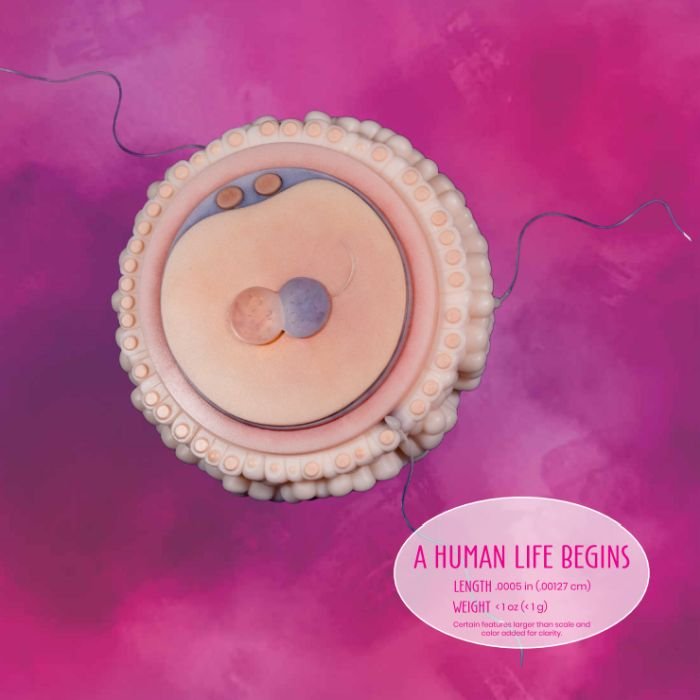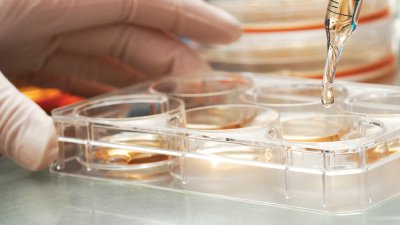
Defining Life: Fertilization
How we know human life begins at fertilization, as the Bible affirms, and the cultural consequences of ignoring the facts.
When does life begin? For every sexually reproducing species, the answer is obvious: fertilization is where life begins. Yet somehow, this definition is contentious when some talk about humans. From the redefinition of the word conception to the frequent chants of “my body, my choice,” the beginning of human life is controversial within society. While this is unsurprising in the pagan, post-Christian society of many Western nations, the science of biology dumps cold water on these social revolutionaries. New life begins with fertilization, period.
Resources to Help You Share the Sanctity-of-Life Message
- Share your story, read inspiring testimonies, get answers, and get help
- Get a life-affirming VBS for your church and neighborhood
- Have an eye-catching, “3D” lenticular version of the powerful Fearfully and Wonderfully Made exhibit for your coffee table or church
- Find out about the Fearfully and Wonderfully Made exhibit at the Creation Museum
Since Adam and Eve in the Garden of Eden, a man and a woman were required to produce offspring. Unsurprisingly, even today in our technologically advanced society, this is still true. While in vitro fertilization, sperm banks, and surrogate pregnancies are possible now, male and female gametes are still required to make a baby.
Reproductive Biology 101
Males produce around 300 million sperm per day, but only one will accomplish fertilization. The sperm consists of a head portion that contains DNA from the father and a flagellar tail portion, serving as a propulsion device. Once inside a woman’s body, the sperm must find its way to the ovum, located in the Fallopian tube. But it isn’t that simple. The successful sperm must be first to penetrate the zona pellucida surrounding the egg, which consists of proteins to bind the spermatozoa (sperm).1 Once the sperm attaches, enzymes in the sperm head begin to penetrate the zona pellucida,2 and numerous processes begin to prevent any other sperm access to the interior of the egg. Once the egg is fertilized, it will be implanted in the uterus and develop further until birth.

Plate from the Creation Museum’s Fearfully and Wonderfully Made exhibit.
For the egg, the path is simpler. When a woman is born, she has all the eggs she will ever have resting in her ovaries, awaiting release. Roughly once a month, the woman’s body releases one (rarely two or more) eggs. Once the egg is released, it will travel down the Fallopian tube and wait for sperm. The egg is “smart.” It can tell the difference between human and non-human sperm, as well as between sperm and other cells.3 If no sperm arrives, the egg is expelled from the body, and the cycle starts over again.
Though this process as described here is greatly simplified, even as such, it points to an elegant process from an magnificent Creator who has designed life to reproduce after its kind. More importantly for us, he made us in his image and then became a man to live as one of us (Philippians 2:7)—yet perfectly (Hebrews 4:15)—and to die for us (Mark 10:45).
No Question
[At fertilization, a] new person—made in the image of God (Genesis 1:27)—has been created. From this moment on, any attempt to end the life of this baby . . . is murder.
Biologically, genetically, and spiritually, the moment a sperm successfully fertilizes an egg, a new person—made in the image of God (Genesis 1:27)—has been created. From this moment on, any attempt to end the life of this baby, including preventing implantation as some abortofacients do, is murder.
It is utterly unconscionable that any nation, much less one with the Christian heritage of America, tolerate this cultural genocide against the weakest and most innocent among us for one instant longer.
Footnotes
- Satish K. Gupta, Anasua Ganguly, Antonin Bukovsky, Raj K. Sharma, Pankaj Bansal, and Beena Bhandari, “In humans, zona pellucida glycoprotein-1 binds to spermatozoa and induces acrosomal exocytosis,” Human Reproduction 25, no. 7 (2010): 1643–1656, https://doi.org/10.1093/humrep/deq105.
- Peter Sutovsky, Shawn W. Zimmerman, Gaurishankar Manandhar, Young-Joo Yi, Satish K. Gupta, Miriam Sutovsky, John F. Odhiambo, Michael D. Powell, and David J. Miller. “Sperm Proteasomes Degrade Sperm Receptor on the Egg Zona Pellucida During Mammalian Fertilization.” PLoS ONE (2011), https://doi.org/10.1371/journal.pone.0017256.
- Luca Jovine, Isha Raj, Hamed Sadat Al Hosseini, Elisa Dioguardi, Kaoru Nishimura, Ling han, Alessandra Villa, and Daniele de Sanctis. “Structural Basis of Egg Coat-Sperm Recognition at Fertilization.” Cell 169, no. 7 (2017): 1315–1326, https://doi.org/10.1016/j.cell.2017.05.033.
Recommended Resources

Answers in Genesis is an apologetics ministry, dedicated to helping Christians defend their faith and proclaim the good news of Jesus Christ.
- Customer Service 800.778.3390
- © 2024 Answers in Genesis







